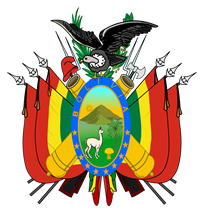Bolivia: Government
Key Figures
- Chief of State:
- President Luis Alberto Arce Catacora
- Head of Government:
- President Luis Alberto Arce Catacora
Overview
- Government Name:
- Plurinational State of Bolivia
- Constitution:
- Adopted: 2009; Defines Bolivia as a unitary plurinational, and secular state. Additionally, it calls for a mixed economy of state, private, and communal ownership; restricts private land ownership to a designated amount; and recognizes various autonomies at the local and departmental level.
- Government Type:
- Republic

Index of Economic Freedom
Country Risk Rating
Government Branches
| Main Powers | Election Process | Election Cycle 1 | |
|---|---|---|---|
| Executive | The president possesses the executive authority. |
The president is elected by popular vote to a five year term. |
5 years |
| Judicial | The supreme court exercises legal power and upholds the constitution. |
Supreme court judges are appointed to 10 year terms through popular vote. |
6 years |
| Legislative | The national congress is the main legislative body of government. Its lower house is the chamber of deputies, and its upper house is the senate. |
The 36 members of the chamber of senators are elected by proportional representation from party lists to serve 5-year terms. There are 130 members of the chamber of deputies, 70 of which are directly elected from a single district, 7 are directly elected from non-contiguous indigenous districts, while another 53 are elected by proportional representation from party lists. |
5 years |
Regional Trade Blocs
International Organization Participation [2]
Environmental Agreements [3]
Tax Information [2]
- Tax Authority:
- Internal Taxes Service
- Tax Name:
- VAT
Sources:
- ElectionGuide http://www.electionguide.org/
- EY, http://www.ey.com
- CIA World Factbook, https://www.cia.gov/the-world-factbook/
- U.S. Bilateral Relations Fact Sheets http://www.state.gov/r/pa/ei/bgn/


